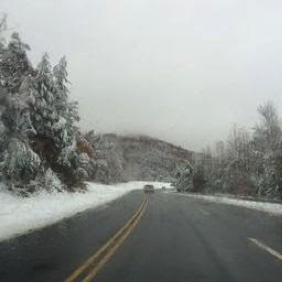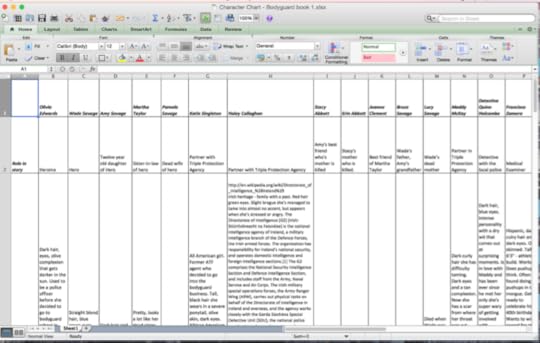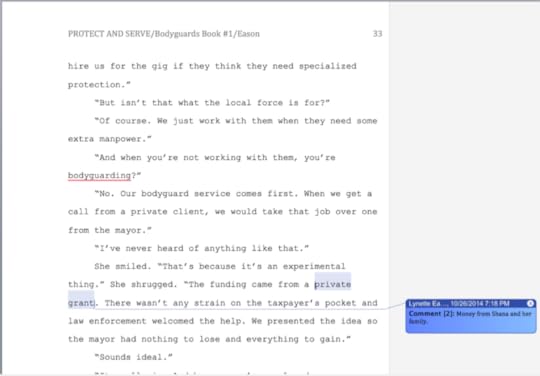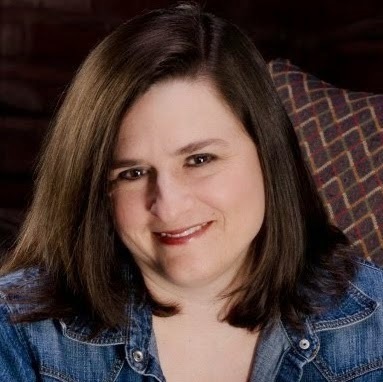Making the Most of an Opportunity—Organization Tips for Writing a Series
by Lynette Eason @LynetteEason
Good Wednesday morning to you! I hope you all have been having an awesome week. I just got back from Pigeon Forge, TN this past Saturday. My family and I went for a mini vacay. It was some much needed fun and rest. Oh wait…scratch the rest part. We stayed at a water park, did one of the racetracks, played mini golf (i.e. putt putt), ate at the Apple Barn and Old Mill, went shopping, played in the rain and the snow and the sun (yes, we experienced all four seasons while we were there… and…well, you get the picture.
 Driving home, we ended up at a complete stop on I-40 thanks to a wreck. We decided to take the long way home instead of sitting for the next 2 hours (according to the highway patrol my husband questioned as to the amount of time we would be waiting.) Yes, our three hour trip turned into a six hour detour. We ran into this: all within an hour. It was so weird to see the beautiful fall colored leaves covered in snow. Ha.
Driving home, we ended up at a complete stop on I-40 thanks to a wreck. We decided to take the long way home instead of sitting for the next 2 hours (according to the highway patrol my husband questioned as to the amount of time we would be waiting.) Yes, our three hour trip turned into a six hour detour. We ran into this: all within an hour. It was so weird to see the beautiful fall colored leaves covered in snow. Ha.
So, in order to pass the time, I worked. I thought I’d share a bit of how I’ve been keeping track of the details in my current novel. It’s book one in my next series for Revell and doesn’t have a title yet. I’ve been calling it Book One. Ha.When I start a series, it’s never easy figuring out the details. Getting to know the characters is a real chore and making sure I don’t leave anything out is a pain. So I’ve come up with a way to keep everything straight and thought I’d share it with you.
First of all, I create a character chart that looks something like this:

Here’s where I note character names, role in the story, age, physical description, etc. If I do some research on that character, I put that in there, too. Yes, I use Scrivener ( a writing software) but for my characterization, I seem to do better using Excel.
Then I come up with the first scene and start writing. As I’m going to through the story, if I need do a little more research, I note it using the comments option in track changes. This way, I can keep going, but don’t have to stop and think about where I need to go back and make changes. At one point in my story, I say something about how an organization is funded – via a private grant. I make a note on the page to explain where that money came from at a later date. One page on my manuscript may look like this:

Now I can keep writing and find a way to insert that somewhere in the story later. I don’t have to stop the flow of writing right this second. Also, as I’m writing, I may get a scene idea. I can stop and insert that idea for the scene right where I am and later as I scroll through the comments, addressing my notes, I’ll remember to go in and add that scene wherever it needs to go in the story. There are a lot of great writing software programs out there and I think I’ve probably tried them all. But I have to say, this method is what seems to work best for me.
So, yes, driving home over the mountains and through the woods (the rain, the snow, and the sun) I found time to work. Thank goodness.
Just thought I’d share.
Hope you have a blessed Wednesday!
BTW: If you guys have any topics of writing you’d like me talk about, let me know. One can never have too many ideas to blog about! LOL
TWEETABLESBest-selling author @LynetteEason shares organization tips for #writing a series on @EdieMelson (Click to Tweet)
Learn how to organize the info you need when writing a series - via @LynetteEason on @EdieMelson (Click to Tweet)
 Lynette Eason is the best selling, award winning author of the Women of Justice Series and the Deadly Reunions series. Since 2007, she has written/contracted thirty-six books. Currently, she writes for Revell and Harlequin’s Love Inspired Suspense line. Her books have appeared on the CBA and ECPA bestseller lists. She has won several awards including the 2013 Carol Award for WHEN A HEART STOPS. Lynette teaches at writing conferences all over the country. She is a member of American Christian Fiction Writers (ACFW) and Romance Writers of America (RWA). Lynette can be found online at www.lynetteeason.com and www.facebook.com/lynette.eason and @lynetteeason on Twitter.
Lynette Eason is the best selling, award winning author of the Women of Justice Series and the Deadly Reunions series. Since 2007, she has written/contracted thirty-six books. Currently, she writes for Revell and Harlequin’s Love Inspired Suspense line. Her books have appeared on the CBA and ECPA bestseller lists. She has won several awards including the 2013 Carol Award for WHEN A HEART STOPS. Lynette teaches at writing conferences all over the country. She is a member of American Christian Fiction Writers (ACFW) and Romance Writers of America (RWA). Lynette can be found online at www.lynetteeason.com and www.facebook.com/lynette.eason and @lynetteeason on Twitter.
Good Wednesday morning to you! I hope you all have been having an awesome week. I just got back from Pigeon Forge, TN this past Saturday. My family and I went for a mini vacay. It was some much needed fun and rest. Oh wait…scratch the rest part. We stayed at a water park, did one of the racetracks, played mini golf (i.e. putt putt), ate at the Apple Barn and Old Mill, went shopping, played in the rain and the snow and the sun (yes, we experienced all four seasons while we were there… and…well, you get the picture.
 Driving home, we ended up at a complete stop on I-40 thanks to a wreck. We decided to take the long way home instead of sitting for the next 2 hours (according to the highway patrol my husband questioned as to the amount of time we would be waiting.) Yes, our three hour trip turned into a six hour detour. We ran into this: all within an hour. It was so weird to see the beautiful fall colored leaves covered in snow. Ha.
Driving home, we ended up at a complete stop on I-40 thanks to a wreck. We decided to take the long way home instead of sitting for the next 2 hours (according to the highway patrol my husband questioned as to the amount of time we would be waiting.) Yes, our three hour trip turned into a six hour detour. We ran into this: all within an hour. It was so weird to see the beautiful fall colored leaves covered in snow. Ha.So, in order to pass the time, I worked. I thought I’d share a bit of how I’ve been keeping track of the details in my current novel. It’s book one in my next series for Revell and doesn’t have a title yet. I’ve been calling it Book One. Ha.When I start a series, it’s never easy figuring out the details. Getting to know the characters is a real chore and making sure I don’t leave anything out is a pain. So I’ve come up with a way to keep everything straight and thought I’d share it with you.
First of all, I create a character chart that looks something like this:

Here’s where I note character names, role in the story, age, physical description, etc. If I do some research on that character, I put that in there, too. Yes, I use Scrivener ( a writing software) but for my characterization, I seem to do better using Excel.
Then I come up with the first scene and start writing. As I’m going to through the story, if I need do a little more research, I note it using the comments option in track changes. This way, I can keep going, but don’t have to stop and think about where I need to go back and make changes. At one point in my story, I say something about how an organization is funded – via a private grant. I make a note on the page to explain where that money came from at a later date. One page on my manuscript may look like this:

Now I can keep writing and find a way to insert that somewhere in the story later. I don’t have to stop the flow of writing right this second. Also, as I’m writing, I may get a scene idea. I can stop and insert that idea for the scene right where I am and later as I scroll through the comments, addressing my notes, I’ll remember to go in and add that scene wherever it needs to go in the story. There are a lot of great writing software programs out there and I think I’ve probably tried them all. But I have to say, this method is what seems to work best for me.
So, yes, driving home over the mountains and through the woods (the rain, the snow, and the sun) I found time to work. Thank goodness.
Just thought I’d share.
Hope you have a blessed Wednesday!
BTW: If you guys have any topics of writing you’d like me talk about, let me know. One can never have too many ideas to blog about! LOL
TWEETABLESBest-selling author @LynetteEason shares organization tips for #writing a series on @EdieMelson (Click to Tweet)
Learn how to organize the info you need when writing a series - via @LynetteEason on @EdieMelson (Click to Tweet)
 Lynette Eason is the best selling, award winning author of the Women of Justice Series and the Deadly Reunions series. Since 2007, she has written/contracted thirty-six books. Currently, she writes for Revell and Harlequin’s Love Inspired Suspense line. Her books have appeared on the CBA and ECPA bestseller lists. She has won several awards including the 2013 Carol Award for WHEN A HEART STOPS. Lynette teaches at writing conferences all over the country. She is a member of American Christian Fiction Writers (ACFW) and Romance Writers of America (RWA). Lynette can be found online at www.lynetteeason.com and www.facebook.com/lynette.eason and @lynetteeason on Twitter.
Lynette Eason is the best selling, award winning author of the Women of Justice Series and the Deadly Reunions series. Since 2007, she has written/contracted thirty-six books. Currently, she writes for Revell and Harlequin’s Love Inspired Suspense line. Her books have appeared on the CBA and ECPA bestseller lists. She has won several awards including the 2013 Carol Award for WHEN A HEART STOPS. Lynette teaches at writing conferences all over the country. She is a member of American Christian Fiction Writers (ACFW) and Romance Writers of America (RWA). Lynette can be found online at www.lynetteeason.com and www.facebook.com/lynette.eason and @lynetteeason on Twitter.
Published on November 05, 2014 01:00
No comments have been added yet.



